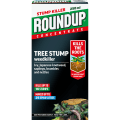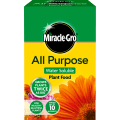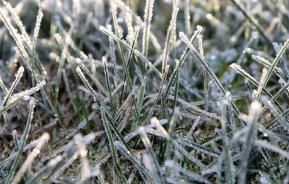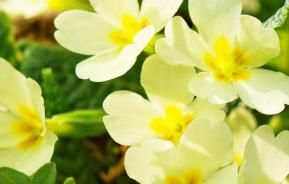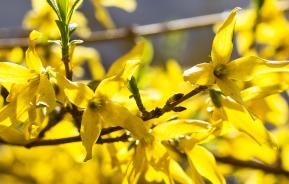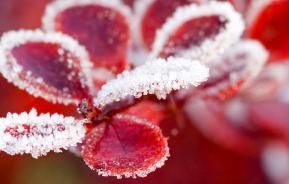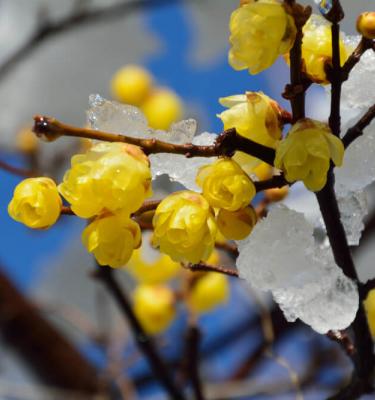
Winter flowering plants and shrubs
Read our guide all about winter plants
Even in the middle of winter there are still a few brave plants in flower, brightening up cold dark days with colour and scent. Whether you’re looking for big shrubs or tiny bulbs, here are a few winter flowering plants and shrubs to suit every garden.
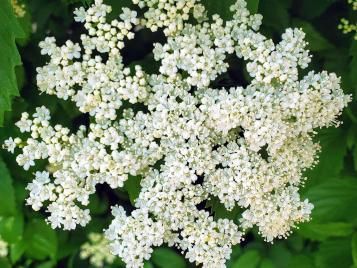
Arrowwood (Viburnum x bodnantense)
The leaves of this large deciduous shrub turn warm shades of orange and red in autumn and then fall, leaving bare stems on which clusters of small, pink, sweetly scented flowers appear right through winter.
Viburnum x bodnantense will grow in most soils, in sun or partial shade. Prune established plants in spring after flowering, cutting back one in every five old stems to ground level to encourage new growth.
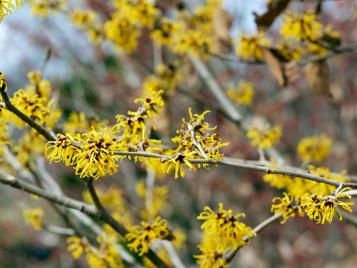
Witch hazel (Hamamelis)
These deciduous shrubs can get fairly large, so they’re best in big gardens. They flower from mid-winter, bearing clusters of yellow, orange or red flowers that look like curly strips of candied peel on bare branches, with a sweet perfume that’s at its best on still, crisp days. They also look great in autumn, when the leaves turn vibrant shades of orange and red.
Witch hazels prefer a fertile, neutral or acidic soil in sun or part shade. They need minimal pruning, but if necessary, prune in spring to remove dead or crossing branches, and remove any suckers growing from the base of the plant.

Christmas box (Sarcococca confusa)
This unassuming evergreen shrub produces clusters of small white flowers in late winter. The flowers might be inconspicuous but the sweet scent always attracts attention.
Sarcococca does best in shade, and once established will even cope with dry shade. Trim lightly in spring if necessary to keep to shape.

Winter honeysuckle ‘Winter Beauty’ (Lonicera x purpusii)
Another deciduous shrub, winter honeysuckle tends to fade into the background for most of the year, then in the middle of winter suddenly produces clusters of delicate creamy white flowers with a heady fragrance often more noticeable a few feet away from the plant.
Plant in a humus-rich, well-drained soil in sun or part shade. Prune established plants in spring after flowering, cutting back flowered shoots to strong new shoots lower down, and cut one in every five old stems right down to the base.
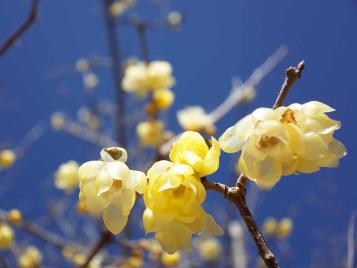
Wintersweet (Chimonanthus praecox)
This very aptly named deciduous shrub flowers in mid- to late winter, bearing clusters of creamy-yellow nodding flowers with purple centres and a sensational scent. Train it against a sunny wall or plant it next to a doorway so that you can appreciate the fragrance as you pass.
Plant in full sun, in fertile, well-drained soil. It needs very little pruning, simply remove any dead, damaged or crossing branches in late spring.
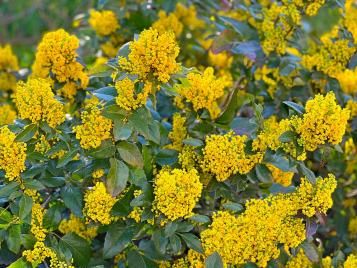
Oregon grape (Mahonia x media)
Mahonia is a tough, evergreen shrub with bold, spiny foliage and bright spires of scented yellow flowers in mid-winter, followed by black berries in spring and summer. It grows well in shade, preferring a moist, well-drained soil. Birds love the berries.
Prune in spring, cutting back as needed to maintain the desired size and removing one in every three older stems to promote new growth.
Winter flowering climbers

Winter jasmine (Jasminum nudiflorum)
Winter jasmine is a shrubby climber, with bright yellow flowers on bare stems in winter. It grows well in sun or partial shade, in a fertile, well-drained soil. Train it over an arch or against a wall to keep it tidy, and prune after flowering, cutting all flowered shoots back to two buds from the main framework of the plant.
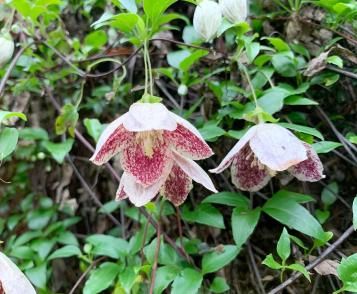
Clematis ‘Freckles’ (Clematis cirrhosa var. purpurascens)
Clematis ‘Freckles’ is an evergreen winter flowering clematis, producing nodding creamy white flowers heavily speckled inside with red. To get the most from this clematis, train it over an arch or pergola so that you can appreciate the flowers from below.
Clematis ‘Freckles’ does best in a sunny position, and like all clematis prefers to have its roots in shade. Cut back after flowering to keep it to the desired size, and mulch in early spring.
Winter flowering perennials
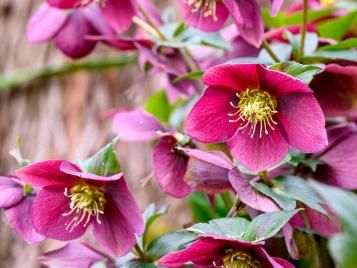
Christmas rose, hellebore (Helleborus)
Hellebores are one of the best flowering plants for winter gardens, with their beautiful nodding flowers, in shades of pink, reds, white and purple, standing out against the dark green leaves. Helleborus niger cultivars flower from mid-December onwards, followed by Helleborus x hybridus cultivars in late winter and early spring.
All hellebores do best in shady spots. Cut off the old leaves in late autumn to make the flowers easier to see – this also reduces the spread of diseases like hellebore black spot. Deadhead after flowering.
Winter flowering bulbs
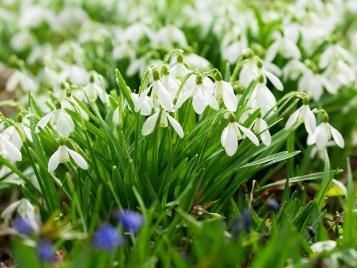
Snowdrops (Galanthus nivalis)
Traditionally, snowdrops appear on Candlemas day (2nd February), but these delicate white nodding flowers often appear earlier, in late winter, signaling the coming of spring. Plant them in the shade of deciduous trees, so they get sunlight in spring while the trees are bare and they benefit from the shade of the trees in summer. Snowdrops establish best if planted ‘in the green’.
For a winter filled with fabulous colour and fragrance, add a few of these wonderful winter flowering plants to your garden this year.
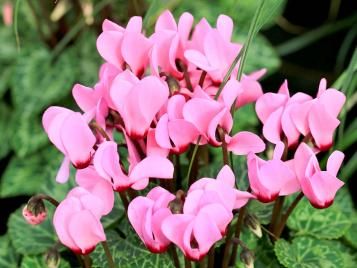
Cyclamens (Cyclamen coum and Cyclamen hederifolium)
With their sculpted pink or white petals and marbled leaves, cyclamens are very popular winter flowering plants. Deceptively delicate-looking, Cyclamen coum and Cyclamen hederifolium are both very hardy, and will thrive planted outside in shady spots. Cyclamen hederifolium flowers first, appearing in late autumn, while Cyclamen coum flowers from mid-winter into early spring.
Cyclamens are best planted ‘in the green’, that is, just after the flowers have faded, but they can also be planted as tubers in autumn or spring. Plant tubers 3-5cm (1-2in) deep in humus-rich, well-drained soil in shade.


